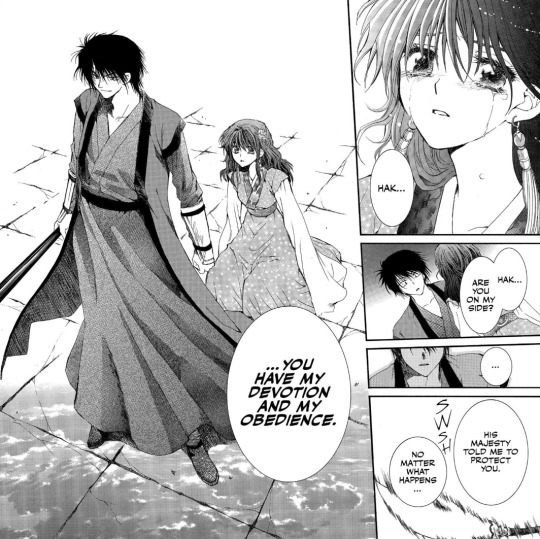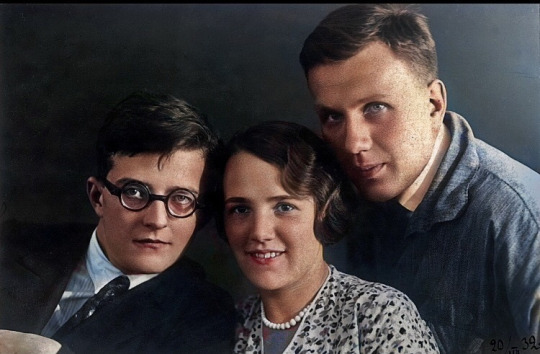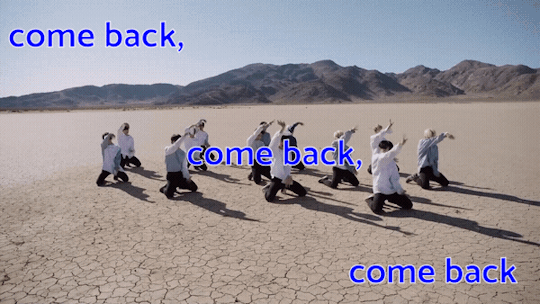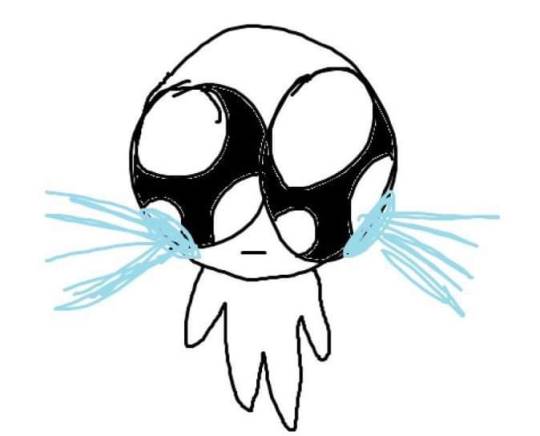#they invented love fun fact
Text
started from the bottom

now we’re here

#yona of the dawn#akatsuki no yona#yona of the dawn spoilers#hakyona#chapter 1 vs chapter 239#'are you on my side' to 'if i'm in danger hak will come for me every time. i can trust in that'#HOW AM I JUST SUPPOSED TO BE NORMAL ABOUT THEM#they invented love fun fact#personal#queue
186 notes
·
View notes
Text









Ada Limón, "Accident Report in the Tall, Tall Weeds" // SouthFloridaReporter.com // Wikipedia, "Baking Powder" // Caroline McCaughey (AARP), "8 Big Inventions Inspired by Love" // Wikipedia, "Band-Aid" // Jim Walsh, "What's the love story behind Pepperidge Farm Goldfish crackers?" // NYFA, "The History of Drive-In Movie Theaters" // Caroline McCaughey, ibid. // Sarah Ruhl, The Clean House
#theme: love to the point of invention#web weaving#webs#web weave#poetry#prose#aesthetic#prose poetry#literature#book quotes#novels#novel quotes#books#quotes#fun facts#wikipedia#wikipedia poetry#compilation#parallels#i love the way men love#love quotes#ada limón#sarah ruhl#history#inspo#words#writing
3K notes
·
View notes
Text
as a fandom we have spent too much time making fun of bruce and tim for being rich and not enough time making fun of jason for becoming one of the richest people in gotham twice, once through adoption and once because he beheaded people in the criminal underground and then proceeded to take over their territory and become a druglord.
#we love a hard working queen#also the fact that bruce and tim get made fun of for being rich is just letting them off easy#tim invented an UNCLE tim used to skate from roof to roof tim doesnt have a high school degre#bruce canonically went missing for like 5 years and came back extremely jacked#JASON LITERALLY STUFFED DRUG LORDS' HEADS IN A DUFFEL BAG AND THEN BECAME A DRUG LORD#JASON MONOPOLISED THE GOTHAM CRIME CIRCUIT#the only reason jason doesnt make the 'top 10 richest ppl in gotham lists' is bc he's dead and he got his money from drugs#jason todd#red hood#dc#dcu#dc comics#batfam
10K notes
·
View notes
Text
devastating to go into the tag for an obscure vampire movie I've been quietly obsessed with for years to find mostly gifsets of minor characters (played by big-name actors) and review blogs saying they didn't like it :(
@ everyone who made a post saying "I liked it :)" I am blowing you a kiss. everyone who made a lovely gifset or photoset of the cinematography I am tipping my hat. that one poster that said "bro did y'all just miss the Entire Message about class and race or???" I am shaking your hand with enthusiasm there was SUCH a message about class and race
anyway everybody should watch Night Teeth and revel in glitzy flashy modern vampires in LA with me
#finx rambles#night teeth#vampires#apparently the marketing heavily overemphasized megan fox (she has a bit role. she's in like one scene)#so that one's not on the fans#but I am sad about all those people fuming bc it didn't have a poly ending#girl this is hollywood? what did you expect?#invent it yourself? that is what fandom is for?? queer reads have always been about discarding endings and living in the liminal??#(side note I love queer readings of fairy tales. fairy tales class was so fun. god I need sleep or something my brain is on SUCH tangents.)#frustrated by that one post saying 'the vampire-slaying gang leader spends the day after a catastrophe befalls#trying to get his shift covered at work? unrealistic'#bro he's working class. he's poor. he's gotta put food on the table. do you think your job cares about your personal tragedy#this is in fact part of the Themes At Play wrt class. believe it or not.#sad also about those reviews that are like 'eh it was mid' but I've never needed critics to agree with me and I'm not about to start now#I did think the gifmakers would be on my side though#the lighting in this movie???#that whole opening sequence in the credits with the storytelling done through reflections in cars at night?#the color choices??? the lighting??!?!?!?!
74 notes
·
View notes
Text









I hate everyone but you<3
#fun fact they invented that trope#i love them too much#six idiots#ben willbond#adam kenyon#the thick of it#Fergus Williams#Adam and Fergus#adam kenyon and fergus williams
133 notes
·
View notes
Text
the rsl #1 hilson hater jokes are funny However i do think some of you need to watch the in the gloaming and maybe also the invention of love
24 notes
·
View notes
Text
Back in this poll I did, Wall of Handprints and gargoyle lore tied for an infodump. The Wall of Handprints info is here (it's basically a communal art piece in the Hidden City that's been continued for several centuries), now on to the gargoyle lore. (Gonna be completely honest, I forgot which of the seven different phone documents I use for writing fic stuff I originally wrote this in, so it took a while to find.)
Huginn and Muninn's species (which I've named pygmy gargoyles due to the fact that all other gargoyles we see are HUGE compared to them) live in large groups, called warrens or hives, usually anywhere between 50-200 members. As a species they reproduce asexually, basically through enchanting rocks to create a sentient lifeform, not unlike a homunculus. In fact, certain parts of the scientific community argue that pygmy gargoyles should be considered homunculi, but since classification as homunculi would seriously mess up their legal status as something of an independent colony not directly governed by the Council of Heads, most pygmy gargoyles don't like the term.
Doing the enchantments to create new gargoyles is actually a very intensive and complicated process, usually involving the whole warren, because enchanting rocks to bring them to life takes a lot of mystic energy (and since gargoyles are maintained as living beings purely through mystic energy, they don't have much to spare). They tend to do these enchantments in batches for the sake of energy efficiency, so the vast majority of gargoyles are automatically born with same age peers that they call hatchmates. Usually these groups are of about 4-7 new goyles at once, but they occasionally are larger for warrens that do the enchantments less frequently (usually ones that have a larger population).
After the goyles are 'born', a small handful of adults will take responsibility for raising them (this is determined before the enchantment is started so that only gargoyles interested in becoming parents will become parents). You have easily three to six direct caretakers--parents--and the rest of the community steps in as needed, something like uncles/aunts, grandparents, or cousins. Gargoyles are not born able to fly, and not all of them develop that ability. For the most part, though, it's a marker of development similar to puberty that they develop around their adolescent years. As a result, gargoyle children are most often called walklings, then flightlings as they start learning how to fly and gradually get better at it.
Pygmy gargoyles, as a rule, address the adults most involved in their upbringing with parental terms, and other less involved adults with familial terms. However, the exact titles are up to the individual kids. One might call someone 'Mama' and one of their hatch mates might call that same person 'Aunt'. Also, it's not uncommon for a kid to switch the terms the use for a given caretaker, so someone might be "Dad" one day, and "Uncle" another. Again, there's no biological connection, so the exact title isn't super important, but more or less indicates a level of closeness.
When gargoyles reach adulthood, they have a coming-of-age ceremony where they pick a new name for themselves. Hatchmates do not always have this ceremony together, as 'adulthood' is defined fairly nebulously based on several factors (flying strength/skill, educational level, social skills, etc), and in fact it's more common for them to have individual ceremonies over the course of several months or years. This ceremony is usually attended by a gargoyle's parents, hatchmates, and close friends. Huginn and Muninn had theirs together, so they picked matching names.
Some random facts: as inorganic beings, gargoyles don't have all the needs as organic ones. Yes, they can eat, but they don't need to. They also aren't capable of truly sleeping; it's more like napping, zoning out, or purposely ignoring the world around them. Most of them have a very good sense of direction (usually as a result of some magnetic material like magnetite or hematite being included during their creation). Also, they do have their own flight-based language, but this post is already massive so I won't go into that right now.
#rottmnt#rottmnt au#rottmnt headcanons#minor interference au#minor interference lore#rottmnt fanfiction#rise of the tmnt#rise of the teenage mutant ninja turtles#i love writing up a lore post and going 'wow this is barely scratching the surface' lmao#i'm so normal about worldbuilding you guys (wrote massive post about the completely invented cultural background of two minor characters)#fun fact i also have a separated au somewhere that draws heavily on all my gargoyle lore#because one of the turtles gets raised in huginn and muninn's warren (an organic being raised by very much inorganic ones is very fun)#but like. the au low key doesn't make sense without all the lore (and this isn't even all the lore)#anyway i love writing a 700 word post and then rambling in the tags lol
26 notes
·
View notes
Text
has entrelac ever. um. been commercially used for a fabric people purchased?
my impression of it is that it was invented in moderne tymes by a hobby knitter, became wildly popular for a couple decades (???) because it was challenging and looked mind-bendingly impressive when you brought it out at a fiber festival, and has now died off because no one has an actual entrelac fabric use case. or really wants one.
#idk i have a mental basket of ''stuff that is impressive and/or fun to knit wildly out of proportion with how much a non-knitter would want#to own or see it''#not because people shouldnt knit such things if they are in fact fun but because. i like to remain in touch with what#the non-knitting ocmmunity might think of that extremely variegated yarn. or whatever. yk#and in my head entrelac is the ultimate ''invented as a process experience by a hobby knitter for hobby knitters''#''interesting to look at‚ can be genuinely lovely/visually appealing but just not a thing it would occur to anyone to want#were they not themselves a knitter.''#and im not sure if that's actually true or if i made it up#box opener
10 notes
·
View notes
Text
You ever think about how in DC, it wouldn’t make much sense to have super developed CGI for movies and practical effects would be more widely used?
Like, most shots that would need to be done via CGI in our universe could be done practically in the dcu. Especially when we began developing early CGI it would be important because there would not have been as big a push or even as big a need to advance CGI to the point where it is today for us. Especially with the comic book tech that people can make & superpowers.
Not to mention people with specific meta abilities would be highly sought out in the film industry.
For example:
In the beginning of CGI being used for fluid dynamics, large realistic CGI water scenes took an absolute shit ton of mathematics, rendering time, and a ridiculous amount of money. They were complicated to do, took a long time and again, it was expensive. Really, really expensive. So, big shots of digital water were done only for big monumental scenes that the director wanted a big impact in or had a lot of significance. Otherwise, unless there was an absolute need for a large digital water shot and they had a massive budget, scenes like that wouldn’t even come across directors minds as at the time, it simply wasn’t feasible.
So, what would a good solution to doing a massive water scene in, let’s say, the 70s in the DCU? The answer: Do it practically. It’d not only be cheaper but would take far less time and effort. Honestly, the hardest thing would be finding metas with the specific abilities needed.
So, for that water scene hire 50 metas (my headcannon is that most metas don’t have very strong or flashy abilities. so you’d need a Lot of people for something like this.) that together can choreograph & move the water in the way needed for the shot.
But because hiring someone to make a device or via using metas can achieve the effects wanted, the film industry would continue to rely on doing effects that would, in our world, need to be done with CGI but to them can be done with gadgets and superpowers. And while our CGI programs progressed and made breakthroughs, in DC there would be less stress on developing such tech as it wasn’t needed nearly as often. As a result, it would become semi-standard to hire metas for certain types of practical effects. Hell, it would probably become more expensive to hire metas for these effects as time went on as big blockbuster movies would go on to make these insane, before impossible to make scenes using metas’ abilities. The practice would fall in & out of use as metas would fall in and out of public opinion as politics and history continued in the DCU but it would definitely remain a cemented practice in filmmaking.
Anyways, it would mean that metas with specific abilities that favor certain practical effects would be sought after in the film industry.
For example of abilities sought and why:
- minor weather control: for… weather control. Also, who needs to spray a set full of asbestos snow when a guy can come over & make it snow over your set to have it be more natural. Or even better, just have a snow gun in the prop department you can use for winter scenes.
- telekinesis: imagine the camera techniques that would be developed due to being able to hold and move a camera via telekinesis, that’s actually sick
- element control based abilities: so much shit. Especially earth based because they would be able to rearrange a landscape. Water: who needs to cgi blood & gore when you have a meta that’s bursting blood packets with chunks of meat in them?
- guns, gadgets, and gizmos: I like to imagine that there is this almost monopoly over props and tech that have advanced tech for people to rent out for filmmaking. Like, as mentioned before, a snow gun for winter scenes. Or, an intangibility ring so an actor can get “stabbed” but not actually get hurt. Etc.
- pyrotechnics/demolition: it’s Hollywood, they love that shit. people with the ability to explode things without having to pay for explosives plus a meta with telekinesis to direct the blast of the explosion safely would be amazing. People with pyrotechnic or demolition abilities would probably need a license to practice safely.
- shapeshifting: body doubles, great for comedies, stunt acting, injury scenes (need an actor to have their hand blown off? No need for prosthetics when there’s a guy that can suddenly have no hand. They could be an extra in every scene and nobody would notice that they’re the same person.
Also there’d probably eventually be an incident in film where a shapeshifter changed their face to look like a famous actor or a political figure or smth & thought it would be fine but it made a massive uproar and resulted in laws that shapeshifters cannot impersonate real people in media without credit to the person being imitated & their consent with a lot of paperwork necessary.
- acrobatic abilities, fighting, strength, speed: stunt actor.
- control or speak to animals or plants: would help a Lot in skipping some of the effort to train animals for a role.
I just thought it would be cool to consider that due to the metagene and comic book tech existing, certain technology, like CGI & visual effects would develop at a different rate due to most effects being able to be made practically in live-action films.
#dc#dc comics#justice league#dcu worldbuilding#long post#I’m a picky bitch and love adding unnecessary bits of reality to fictional universes#people are always going to pick the cheaper and easier option#and I’m the beginning of cg: hiring one person with meta powers is much cheaper than inventing a physics generating computer program#it just makes the most amount of sense. the fact that there’s this extra ability that we don’t have makes it a fun thing to toy with#because the existence of a metagene would effect so many things you’d normally not think of and while it would help advance certain areas#like maybe schools for certain basic meta abilities on how to do a certain effect or genre of meta filmmaking#but would absolutely effect the thing that humans excel at#creation. people would absolutely exploit the shit out of people with superpowers if it let them accomplish their artistic vision#bones writes#bones speaks
153 notes
·
View notes
Text
Tumblr's Guide to Shostakovich- Asides- Ivan Sollertinsky
So, in addition to my weekly posting for Tumblr's Guide to Shostakovich, I decided I want to do a series of related "asides" posts. These will be posted irregularly (as opposed to weekly) and cover aspects related to Shostakovich that don't fit neatly into one post focusing on one part of the chronological timeline. In this case, I want to talk about Ivan Ivanovich Sollertinsky, specifically his role in Shostakovich's life and music. Sources I'll be citing include Elizabeth Wilson's Shostakovich: A Life Remembered, Shostakovich's own letters to Sollertinsky and Isaak Glikman, Dmitri and Lyudmila Sollertinsky's Pages from the Life of Dmitri Shostakovich, Pamyati I.I. Sollertinskogo (Memories of I.I. Sollertinsky), and I.I. Sollertinsky: Zhizn' i naslediye (Life and Legacy), the latter two both by Lyudmila Mikheeva. Photo citations include the DSCH Publishers website and the DSCH Journal photo archive.

(Dmitri Shostakovich and Ivan Sollertinsky, Novosibirsk, 1942.)
Ivan Ivanovich Sollertinsky was born in Vitebsk, present-day Belarus, on December 3, 1902. He was a polymath, excelling in humanities fields, including linguistics, philosophy, musicology, history, and literature- particularly that of Cervantes. He specialized in Romano-Germanic philology, and spoke a wide range of languages; sources I've read vary from claiming he spoke anywhere from 25 to 30. (He specialized in Romance languages, but I can also confirm from sources that he studied Hungarian, Japanese, Greek, Sanskrit, and German. I've heard it said that he kept a diary in ancient Portuguese so nobody could read it, but I haven't seen this verified.) He had a ferocious wit, which he used to uplift friends and skewer enemies (there's a hilarious anecdote where he once saddled a critic opposed to Shostakovich with the nickname "Carbohydrates" for life), and worked as a professor, orator, and artistic director of the Leningrad Philharmonic. And yet, this impossibly bright star would burn out all too soon at the age of 41 due to a terminal heart condition, leaving his closest friend devastated- and inspired.
Dmitri Shostakovich first met Ivan Sollertinsky in 1921, when they were both students at the Petrograd Conservatory. While Shostakovich claimed he was at first too intimidated to talk to Sollertinsky the first time he saw him, when they met again in 1926, Shostakovich was waiting outside a classroom to take an exam on Marxism-Leninism. When Sollertinsky walked out of the classroom, Shostakovich "plucked up courage and asked him":
"Excuse me, was the exam very difficult?"
"No, not at all," [Sollertinsky] replied.
"What did they ask you?"
"Oh, the easiest things: the growth of materialism in Ancient
Greece; Sophocles' poetry as an expression of materialist tendencies; English seventeenth-century philosophers and something else besides!"
Shostakovich then goes on to state he was "filled with horror at his reply."
(...Yes, these are real people we are talking about. According to Shostakovich, this actually happened. And I love it.)
Later, in 1927, they met at a gathering hosted by the conductor Nikolai Malko, where they hit it off immediately. Malko recalls that they "became fast friends, and one could not seem to do without the other." He further characterizes their friendship:
When Shostakovich and Sollertinsky were together, they were always fooling. Jokes ran riot and each tried to outdo the other in making witty remarks. It was a veritable competition. Each had a sharply developed sense of humour; both were bright and observant; they knew a great deal; and their tongues were itching to say something funny or sarcastic, no matter whom it might concern. They were each quite indiscriminate when it came
to being humorous, and if they were too young to be bitter they could still come mercilessly close to being malicious.

(Shostakovich and Sollertinsky, 1920s.)
Sollertinsky and Shostakovich appeared to be perfect complements of each other- one brash, extroverted, and confident, and the other shy, withdrawn, and insecure, but each sharing a sarcastic sense of humour and love for the arts that would carry throughout their friendship. In Shostakovich's letters to Sollertinsky, we see him confide in him time and again, in everything from drama with women to fears in the midst of the worsening political atmosphere. When worrying about the reception of his ballet "The Limpid Stream," Shostakovich writes in a letter from October 31, 1935:
I strongly believe that in this case, you won't leave me in an extremely difficult moment of my life, and that the only person whose friendship I cherish, the apple of my eye, is you.
So, write to me, for god's sake.
And, in a moment of frustration from August 2, 1930 Shostakovich writes:
"You have a rich personal life. And mine, generally, is shit."
(Famous composers, am I right? They're just like us.)
In addition to a friendship that would last until Sollertinsky's untimely death, he and Shostakovich would influence each other greatly in the artistic spheres as well. Sollertinsky dedicated himself primarily to musicology after meeting Shostakovich (his first review of an opera, Krenek's Johnny, appeared in 1928, after they had become friends), and in turn, Sollertinsky introduced Shostakovich to one of his greatest musical inspirations- the works of Gustav Mahler. Much is to be said about Mahler's influence on Shostakovich's music, to the point where it deserves its own post, but it goes without saying that without Sollertinsky, Shostakovich's entire body of work would have turned out much differently. Starting with the Fourth Symphony (1936), Shostakovich's symphonic works began to take on a heavily Mahlerian angle (in addition to many vocal works), becoming a permanent fixture in his distinct musical style.

(Colorized image of Shostakovich, his wife Nina Vasiliyevna, and Sollertinsky, 1932. One of my absolute favourite photographs.)
Shostakovich's letters to Sollertinsky, from the 20s to early 30s, are characterized by puns and literary references, snide remarks, nervous confessions, and vivid descriptions of the locations he traveled to during his early career. However, as the 1930s progressed and censorship in the arts became more restrictive, signs of worry begin to take shape in the letters. This would all culminate in January 1936, with the denunciation of Shostakovich's opera Lady Macbeth of the Mtsensk District in Pravda. I'll go further into detail about the opera and its denunciation in a later post, but for now, I want to focus on its impact on Shostakovich and Sollertinsky's friendship.
As one of the first world-famous composers whose career began in the then-relatively young Soviet Union, targeting Shostakovich proved to be a calculated move. Due to his prominence and the acclaim he had previously received, both in the USSR and abroad, the portrayal of Shostakovich as a "formalist" meant someone had to take the blame for his supposed "corruption" towards western-inspired music and the avant-garde. The blame fell upon Sollertinsky, who was lambasted in the papers as the "troubadour of formalism." To make matters worse, Sollertinsky had long showed a fascination with western European composers, such as the Second Viennese School, and had previously praised Lady Macbeth in a review as the "future of Soviet art." An article in Pravda from February 14, 1936, about less than a month after the denunciation, stated:
“Shostakovich should in his creation entirely free himself from the disastrous influence of the ideologists of the ‘Leftist Ugliness’ type of Sollertinsky and take the road of truthful Soviet art, to advance in a new direction, leading to the sunny kingdom of Soviet art.”
Critics who had initially praised Lady Macbeth had begun to retract their positive reviews in favour of negative ones, and a vote was cast on a resolution on whether or not to condemn the opera. According to Isaak Glikman, their mutual friend, Shostakovich spoke with Sollertinsky, who was conflicted on what to do, beforehand. Although Sollertinsky didn’t want to condemn his friend, he supposedly told Glikman that Shostakovich had given him permission to “vote for any resolution whatsoever, in case of dire necessity.” When denouncing the opera (supposedly with Shostakovich's permission), Sollertinsky had commented that in order to develop a “true connection” to the Soviet public, Shostakovich would have to develop a “true heroic pathos, and that Shostakovich would ultimately succeed “in the genre of Soviet musical tragedy and the Soviet heroic symphony.” After Shostakovich’s second denunciation in Pravda of his ballet, ��The Limpid Stream,” and the withdrawal of his Fourth Symphony- arguably the most Mahlerian of his middle period works- the Fifth Symphony, easily interpreted to follow these criteria, had indeed restored him to favour. Sollertinsky’s reputation, too, was saved.

(Aleksandr Gauk, Shostakovich, Sollertinsky, Nina Vasiliyevna, and an unidentified person, 1930s.)
In 1938, Sollertinsky contracted diphtheria. Ever tireless, he continued to dictate opera reviews and even learned Hungarian while hospitalized, although he became paralyzed in the limbs and jaw. Shostakovich wrote to him often with touching concern:
Dear friend,
It's terribly sad that you are spending your much needed and precious vacation still sick. In any case, when you get better, you need to get plenty of rest.
By the time the letters from this period break off, it's because Shostakovich was able to visit Sollertinsky in the hospital, which he did whenever he was able.
While Sollertinsky was able to recover, their friendship would face yet another test in 1941, due to the German invasion of the Soviet Union during WWII. Sollertinsky evacuated with the Leningrad Philharmonic to Novosibirsk, while Shostakovich chose to stay in Leningrad. However, as the city fell under siege, due to the safety of his family, Shostakovich fled with Nina Vasiliyevna and their two children to Kubiyshev (now Samara) that October, having spent about a month in Leningrad during what would be one of the deadliest sieges of the 20th century. It was in Kubiyshev that Shostakovich would finish his famous Seventh Symphony (which, again, will receive its own post), before eventually moving permanently to Moscow (although he still taught for a time at the Leningrad Conservatory).
During this period of evacuation, Shostakovich's letters to Sollertinsky are heartbreaking. We not only see him pining for his friend, but worrying for his safety and that of his family, including his mother and sister, who were still in Leningrad at the time. Still, he reminisces of their time together before the war, with the hope that he and Sollertinsky would be back home soon. In a letter from 12th February, 1942:
Dear friend, I painfully miss you, and believe that soon, we will be home, and will visit each other and chat about this and that over a bottle of good Kakhetian no. 8 [a Georgian wine]. Take care of yourself and your health. Remember: You have children for which you are responsible, and friends, and among them is D. Shostakovich.
In 1943, Sollertinsky arrived in Moscow, where Shostakovich was living at the time, to give a speech on the anniversary of Tchaikovsky’s death. At long last, they finally were able to see each other, and anticipated that soon enough, their long period of separation, made bearable only by letters and phone calls, would come to an end: Sollertinsky, living in Novosibirsk, was planning to return to Moscow in February of 1944 to teach a course on music history at the conservatory. When he and Shostakovich said their goodbyes at the train station, neither of them knew it would be the last time they saw one another.
Sollertinsky's heart condition, coupled with his tendency to overwork, poor living conditions, heavy drinking, and added stress, often left him fatigued. On the night of February 10th, 1944, due to a sudden bout of exhaustion, he stayed the night with conductor Andrei Porfiriyevich Novikov, where he died unexpectedly in his sleep. His last public appearance had been the speeches he gave on February 5th and 6th of that year- the opening comments for the Novosibirsk premiere of Shostakovich’s 8th Symphony. A remarkable amount of telegrams and letters from Shostakovich to Sollertinsky survive and have been published in Russian. Some seem hardly significant; others carry great historical importance. Sollertinsky took many of them with him from Leningrad during evacuation; those letters were considered among his most prized possession. His son, Dmitri Ivanovich Sollertinsky, was named after Shostakovich- breaking a long tradition in his family in which the first son was always named "Ivan."
As for Shostakovich, we have letters to multiple correspondents detailing just how distraught he was for months after receiving news via telegram of Sollertinsky’s death. To Sollertinsky’s widow, Olga Pantaleimonovna Sollertinskaya, he wrote:
“It will be unbelievably hard for me to live without him. [...] In the last few years I rarely saw him or spoke with him. But I was always cheered by the knowledge that Ivan Ivanovich, with his remarkable mind, clear vision, and inexhaustible energy, was alive somewhere. [...] Ivan lvanovich and I talked a great deal about everything. We talked about that inevitable thing waiting for us at the end of our lives- about death. Both of us feared and dreaded it. We loved life, but knew that sooner or later we would have to leave it. Ivan lvanovich has gone from us terribly young. Death has wrenched him from life. He is dead, I am still here. When we spoke of death we always remembered the people near and dear to us. We thought anxiously about our children, wives, and parents, and always solemnly promised each other that in the event of one of us dying, the other would use every possible means to help the bereaved family. ”
Shostakovich stuck to his word, making arrangements for Sollertinsky's surviving family to return to Leningrad after it had been liberated, going through the painstaking process of acquiring the necessary documentation and allowing them to stay at his home in Moscow in the meantime.
In 1969, he would write to Glikman:
“On 10 February, I remembered Ivan Ivanovich. It is incredible to think that twenty-five years have passed since he died.”
Furthermore, Shostakovich recalled:
Ivan Ivanovich loved different dates. So he planned to celebrate the twentieth anniversary of our acquaintance in the winter of 1941. This celebration did not take place, since the war had ruined us. When in our last meetings, we planned the 25th anniversary of our friendship for 1947. But in 1947, I will only remember that twenty-five years ago life sent me a wonderful friend, and that in 1944 death took him away from me.
And yet, there was still one more tribute left to make. Shostakovich had already dedicated a movement of a work to Sollertinsky- a setting of Pasternak's translation of Shakespeare Sonnet no. 66 in Six Romances on Verses by English Poets- but after Sollertinsky's death, he completed his Piano Trio no. 2 in August of 1944, a work that had taken months to finish. While he had started the work before Sollertinsky's death and mentions it in a letter to Glikman as early as December 1943, it would since bear a dedication to Sollertinsky's memory.
The second movement of the Trio is a dizzying, electrifying Allegro con Brio- and probably my favourite work of classical music, ever. Sollertinsky's sister, Ekaterina Ivanovna, was said to have considered it a "musical portrait" of her illustrious brother in life, with its fast-paced, jubilant air. The call-and-response between the strings and piano seem, to me, to reflect one of Shostakovich and Sollertinsky's early Leningrad dialogues- the image of two friends out of breath with laughter, each talking over each other as they deliver witty comebacks and jokes that only they understand. For the few minutes that this movement lasts, it is as if Shostakovich and Sollertinsky are revived, if not for just a moment, the unbreakable bond that defied decades of hardship now immortalized in the classical canon, forever carefree and happy in each other's company.
And then comes the pause.
It is this silence between the Allegro con Brio and Adagio that is the loudest, most powerful moment of this piece as eight solemn chords snap us into reality, like the sudden revelation of Sollertinsky's death- as Shostakovich said, "he is dead; I am still here." These eight chords form the base of a passacaglia, the piano cycling through them and nearly devoid of dynamics as the cello and violin sing a lugubrious dirge. The piano- Shostakovich's instrument- seems to mirror the stasis of grief, the inability to move on when paralyzed by loss.
The final movement of the Trio, the Allegretto, seems to speak to a wider form of grief. By 1943, the Soviet Union was receiving news of the Holocaust, and the Allegretto of Shostakovich's Trio no. 2 is among the first instances of Klezmer-inspired themes in Shostakovich's work (not counting the opera Rothschild's Violin, a work by his student Veniamin Fleischman that he finished after Fleischman's death in the war). The idea that the fourth movement is a commentary on the Holocaust is the most popular interpretation for Shostakovich's use of themes inspired by Jewish folk music, but other interpretations include a tribute to Fleischman (who was Jewish), or a nod to Sollertinsky's birthplace of Vitebsk, which had a substantial Jewish population until the Vitebsk Ghetto Massacre in 1941 by the Nazis. (While I haven't read anything confirming that Sollertinsky was ethnically Jewish, the painter Marc Chagall and pianist Maria Yudina, both carrying associations with Vitebsk, were.) Whether the grief expressed here was personal or referencing the larger global situation, the quotation of the fourth movement's ostinato followed by the final E major chords suggest a peaceful resolution after a long movement of aggressive tumult and grotesque rage.
Shostakovich would continue to grieve and remember Sollertinsky, but the ending of this piece- composed over the course of about nine months- perhaps implied closure and healing. In the following years, the war would end, Shostakovich would form new connections (such as a lasting friendship with the composer Mieczyslaw Weinberg), and, as he had done through tragedy before, would continue to write music. Sollertinsky was gone, but left a mark on Shostakovich's life and work, his memory carried in every musical joke and Mahlerian quotation that found its way onto the page.

(Shostakovich at Sollertinsky's grave, 1961, Novosibirsk.)
(By the way, check the tags. ;) )
#shostakovich#dmitri shostakovich#tumblr's guide to shostakovich#classical music#music history#soviet history#ivan sollertinsky#russian history#classical music history#composer#music#history#also fun fact sollertinsky and shostakovich almost wrote a don quixote ballet together but that didn't work out bc shost got denounced#they had an inside joke about a fake composer named persianinov. they invented goncharov you guys#there's one letter from shost to sollertinsky about the time a ballet worker tricked another worker into eating goat shit#sollertinsky would apparently come over to shost's house and sing mahler symphonies in a 'high squeaky voice'#like from memory#they'd write riddles to each other in letters#i love them so much#they are everything to me#apparently they'd also run over to each others' houses to deliver letters if they couldn't see each other#in leningrad ofc#sollertinsky got REALLY PISSED once bc someone suggested changing a bit of shost's music in lady macbeth it was really funny#shost once said sollertinsky had a 'magical influence on the female sex' and like . look at him#he's not wrong#oh btw it's 3 am and I have work tomorrow#oh one last fact they loved to go on roller coasters together (in russia they call them 'american mountains') but#the one they liked burned down lol
45 notes
·
View notes
Text

i hold you tight; the rain disappears
#seagull scribbles#xenoblade chronicles#xc1#shiora#fiora#shulk#they invented love#my wrist hurts a lot so fun fact i drew part of this with my left hand 👍#not a lot of it but like. fiora's shading. maybe shulk's fingernails? idr#also caption is a line from you can do magic 👍bc i've been listening to america all day again
28 notes
·
View notes
Photo





My fave lyrics as gif-sets
Don’t Wanna Cry - Seventeen
#tried to be a bit more inventive with the fonts here#fun fact: this was my first seventeen song#loved it first listen but then got scared at how many members there were#like a fool#svt#lyrics#don't wanna cry#seventeen
7 notes
·
View notes
Note
“TZ could never” aren’t you like 40 years old? And you’re still bitter about Tom still being with Zendaya?
i'm actually 54 divorced with 13 kids and i'm not nor ever was bitter about them but i am bitter that you sent me an ask instead of screenshotting my tags and complain to a tz blog 💔 truly heartbroken that i'm not worthy 💔
#fun fact since you're so interested in my tags:#i was actually one of the first blogs to go ahhhh about the 0702 pics but you probably weren't even a blog then lmao#but anyway for those who don't know: i only stan one couple#and that's frank and jamia. love was invented by them for them#sorry not sorry to all my friends who are married </3
4 notes
·
View notes
Text

for the mk and ziu enjoyers... why are you shy mk 🤔🤭😳
#onf#also the fact that ziu is single handedly starting drama#vav#he's SAYING he's engaged to mk but flirting with etion on the side ??? 🙄#no really he's inventing a love triangle just for fun I love that for them#finally he has people to annoy besides lou
16 notes
·
View notes
Note
I can guarantee you that in all of Brabant history there has not once been a party that didn't end with everbody putting their arms arouns each other's shoulders and singing Brabant
That's what I'm telling you!! He invented the place
#he invented trains too#fun fact trains didn't make sounds until guusie released per spoor. that's when they started going. kedeng kedeng#also I'm literally from the north but I love brabant (the song) as well#it's a pretty song Idk what to say
3 notes
·
View notes
Text









OOOOOH DOES SHE KNOW THAT WE BLEED THE SAME DON'T WANNA CRY BUT I BREAK THAT WAY
#fun fact it's been 5 yrs 11 days and uhh roughly 9 hours since i first saw this scene#i got in the car after my horse riding class with 2 kittens in my hands coz my#mother and i randomly decided to adopt them on the spot and i#checked my phone and the sheak peek had dropped. words cannot#explain the absolute State i was in at that moment i swear to god#anyway. 2x18 literally invented love goodbye#shadowhunters#sh rewatch#if you see me being mentally ill about a terrible show look away !!!!!!!!!!!#u wouldn't get it.
13 notes
·
View notes